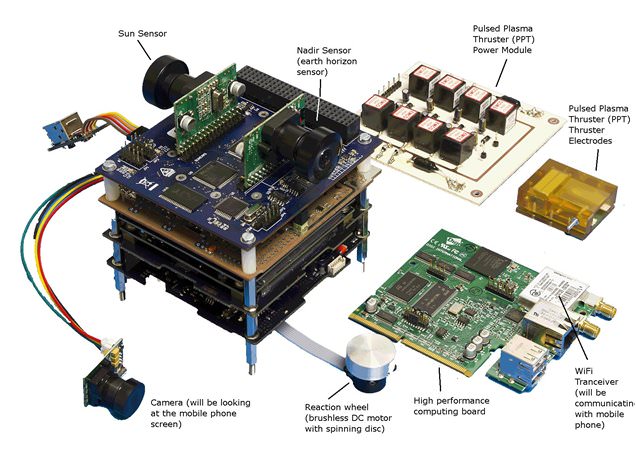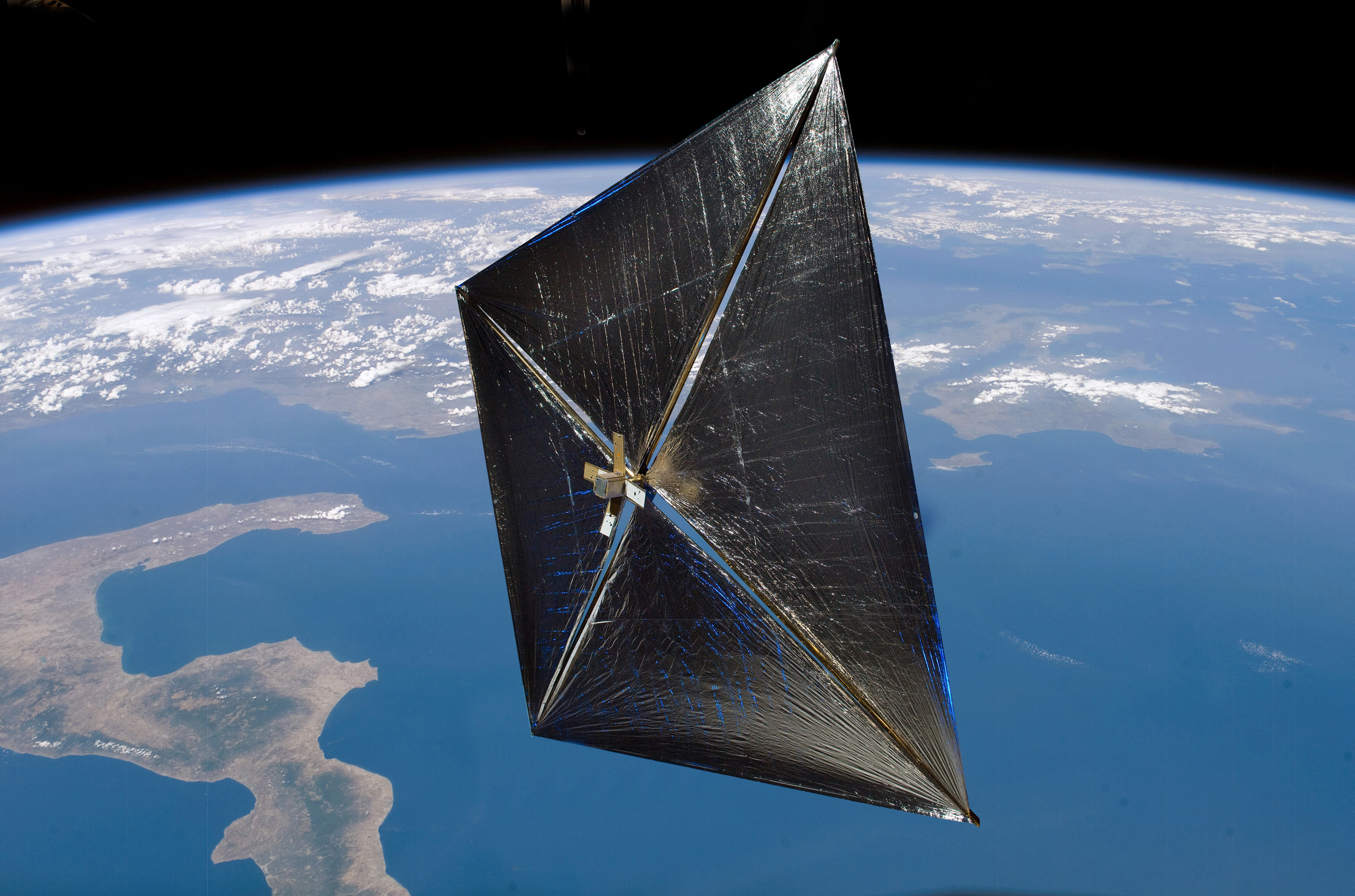An asteroid’s size, shape, and rotational speed are clues to its internal properties and potential resources for mining operations. However, of the more than 20,000 near-Earth asteroids currently known, only a tiny fraction have been sufficiently characterized to estimate those three properties accurately. That is essentially a resource constraint – there aren’t enough dedicated telescopes on Earth to keep track of all the asteroids for long enough to characterize them, and deep space resources, such as the Deep Space Network required for communications outside Earth’s orbit, are already overutilized by other missions. Enter the Autonomous Nanosatellite Swarming (ANS) mission concept, developed by Dr. Simone D’Amico and his colleagues at Stanford’s Space Rendezvous Laboratory.
Continue reading “Swarming Satellites Could Autonomously Characterize an Asteroid”A Cool Idea to Catch Up With an Interstellar Visitor

Poor, dim-witted humanity.
We used to think we were the center of everything. That wasn’t that long ago, and even though we’ve made tremendous advancements in our understanding of our situation here in space, we still have huge blind spots.
For one, we’re only now waking up to the reality of interstellar objects passing through our Solar System.
Continue reading “A Cool Idea to Catch Up With an Interstellar Visitor”LightSail 2 is Sending Home New Pictures of Earth
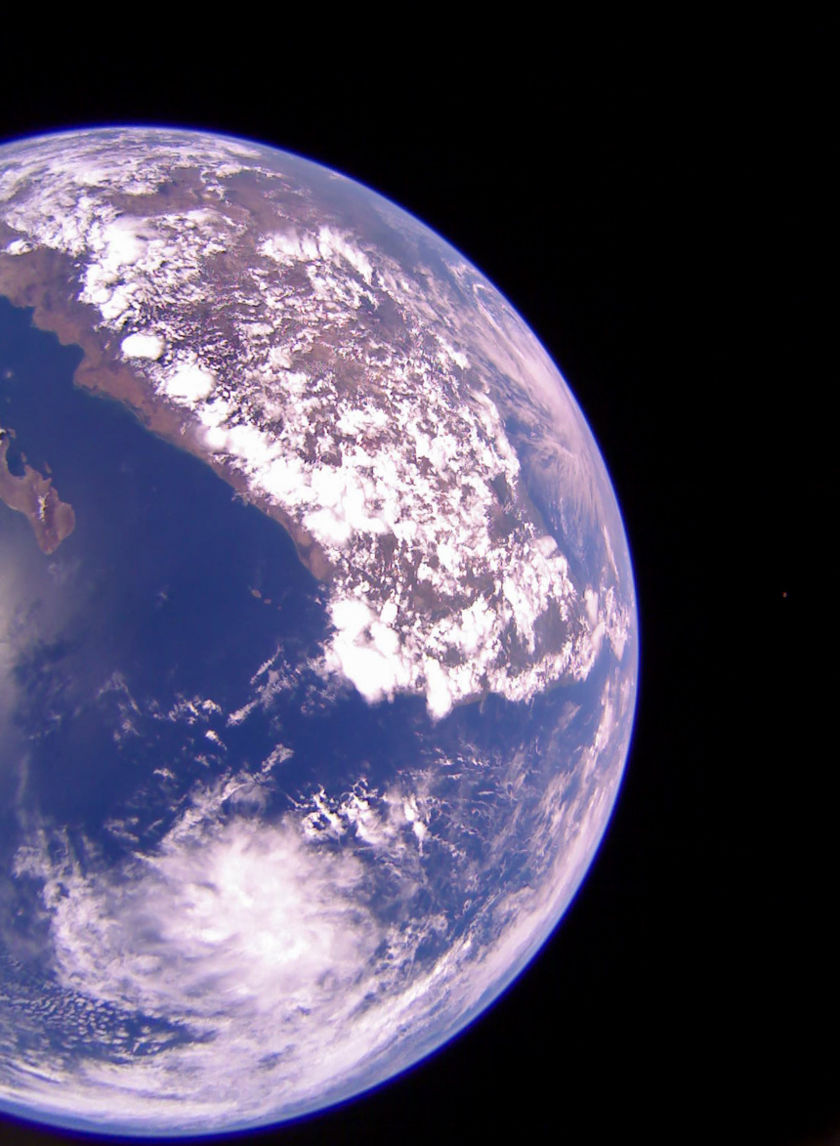
LightSail 2, the brainchild of The Planetary Society, has gifted us two new gorgeous images of Earth. The small spacecraft is currently in orbit at about 720 km, and the LightSail 2 mission team is putting it through its paces in preparation for solar sail deployment sometime on or after Sunday, July 21st.
Continue reading “LightSail 2 is Sending Home New Pictures of Earth”Are You Ready For The NanoSWARM?
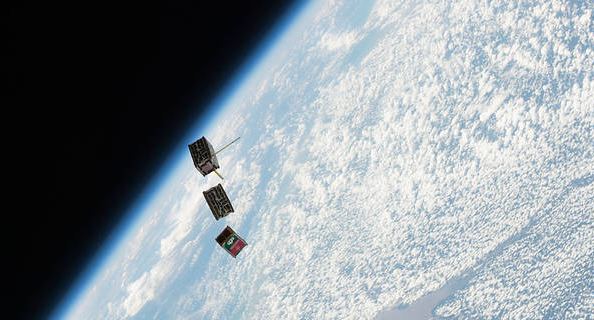
We’re accustomed to the ‘large craft’ approach to exploring our Solar System. Probes like the Voyagers, the Mariners, and the Pioneers have written their place in the history of space exploration. Missions like Cassini and Juno are carrying on that work. But advances in technology mean that Nanosats and Cubesats might write the next chapter in the exploration of our Solar System.
Nanosats and Cubesats are different than the probes of the past. They’re much smaller and cheaper, and they offer some flexibility in our approach to exploring the Solar System. A Nanosat is defined as a satellite with a mass between 1 and 10 kg. A CubeSat is made up of multiple cubes of roughly 10cm³ (10cm x 10cm x 11.35cm). Together, they hold the promise of rapidly expanding our understanding of the Solar System in a much more flexible way.
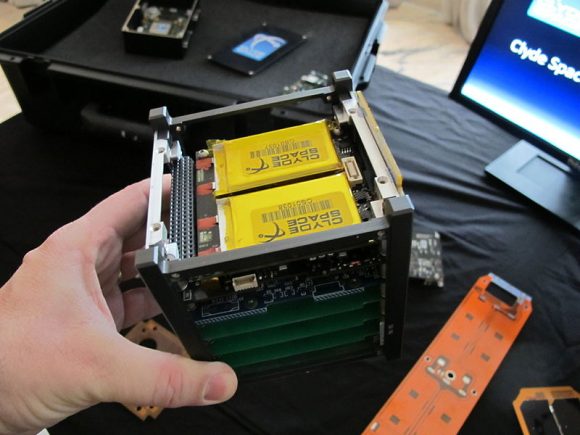
NASA has been working on smaller satellites for a few years, and the work is starting to bear some serious fruit. A group of scientists at JPL predicts that by 2020 there will be 10 deep space CubeSats exploring our Solar System, and by 2030 there will be 100 of them. NASA, as usual, is developing NanoSat and CubeSat technologies, but so are private companies like Scotland’s Clyde Space.
Clyde Space from Clyde Space on Vimeo.
INSPIRE and MarCO
NASA has built 2 Interplanetary NanoSpacecraft Pathfinder In Relevant Environment (INSPIRE) CubeSats to be launched in 2017. They will demonstrate what NASA calls the “revolutionary capability of deep space CubeSats.” They’ll be placed in earth-escape orbit to show that they can withstand the rigors of space, and can operate, navigate, and communicate effectively.
Following in INSPIRE’s footsteps will be the Mars Cube One (MarCO) CubeSats. MarCO will demonstrate one of the most attractive aspects of CubeSats and NanoSats: their ability to hitch a ride with larger missions and to augment the capabilities of those missions.
In 2018, NASA plans to send a stationary lander to Mars, called Interior Exploration using Seismic Investigations, Geodesy and Heat Transport (InSight). The MarCO CubeSats will be along for the ride, and will act as communications relays, though they aren’t needed for mission success. They will be the first CubeSats to be sent into deep space.
So what are some specific targets for this new class of small probes? The applications for NanoSats and CubeSats are abundant.
Other NanoSat and CubeSat Missions
NASA’s Europa Clipper Mission, planned for the 2020’s, will likely have CubeSats along for the ride as it scrutinizes Europa for conditions favorable for life. NASA has contracted 10 academic institutes to study CubeSats that would allow the mission to get closer to Europa’s frozen surface.
The ESA’s AIM asteroid probe will launch in 2020 to study a binary asteroid system called the Didymos system. AIM will consist of the main spacecraft, a small lander, and at least two CubeSats. The CubeSats will act as part of a deep space communications network.
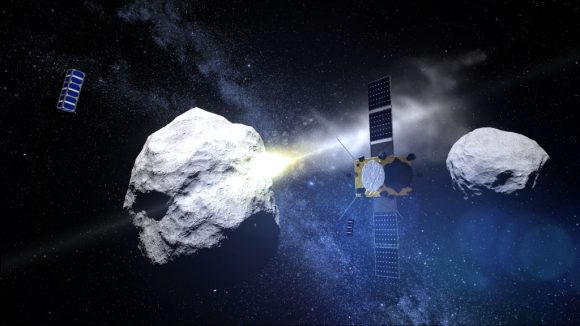
The challenging environment of Venus is also another world where CubeSats and NanoSats can play a prominent role. Many missions make use of a gravity assist from Venus as they head to their main objective. The small size of NanoSats means that one or more of them could be released at Venus. The thick atmosphere at Venus gives us a chance to demonstrate aerocapture and to place NanoSats in orbit around our neighbor planet. These NanoSats could take study the Venusian atmosphere and send the results back to Earth.
NanoSWARM
But the proposed NanoSWARM might be the most effective demonstration of the power of NanoSats yet. The NanoSWARM mission would have a fleet of small satellites sent to the Moon with a specific set of objectives. Unlike other missions, where NanoSats and CubeSats would be part of a mission centered around larger payloads, NanoSWARM would be only small satellites.
NanoSWARM is a forward thinking mission that is so far only a concept. It would be a fleet of CubeSats orbiting the Moon and addressing questions around planetary magnetism, surface water on airless bodies, space weathering, and the physics of small-scale magnetospheres. NanoSWARM would target features on the Moon called “swirls“, which are high-albedo features correlated with strong magnetic fields and low surficial water. NanoSWARM CubeSats will make the first near-surface measurements of solar wind flux and magnetic fields at swirls.
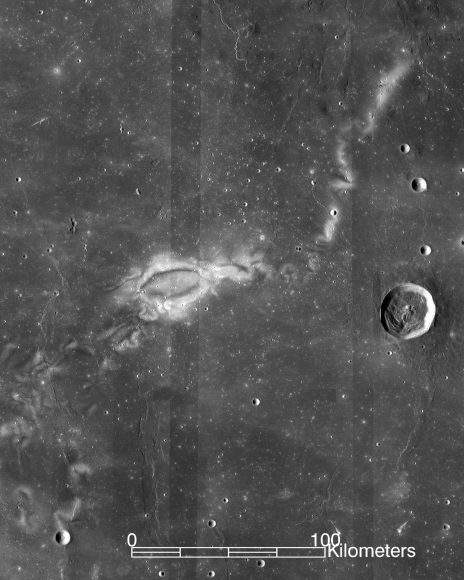
Credits: NASA LRO WAC science team
NanoSWARM would have a mission architecture referred to as “mother with many children.” The mother ship would release two sets of CubeSats. One set would be released with impact trajectories and would gather data on magnetism and proton fluxes right up until impact. A second set would orbit the Moon to measure neutron fluxes. NanoSWARM’s results would tell us a lot about the geophysics, volatile distribution, and plasma physics of other bodies, including terrestrial planets and asteroids.
Space enthusiasts know that the Voyager probes had less computing power than our mobile phones. It’s common knowledge that our electronics are getting smaller and smaller. We’re also getting better at all the other technologies necessary for CubeSats and NanoSats, like batteries, solar arrays, and electrospray thrusters. As this trend continues, expect nanosatellites and cubesats to play a larger and more prominent role in space exploration.
And get ready for the NanoSTORM.
How Will NASA Find Life On Other Worlds?

For a long time, the idea of finding life on other worlds was just a science fiction dream. But in our modern times, the search for life is rapidly becoming a practical endeavour. Now, some minds at NASA are looking ahead to the search for life on other worlds, and figuring out how to search more effectively and efficiently. Their approach is centered around two things: nano-satellites and microfluidics.
Life is obvious on Earth. But it’s a different story for the other worlds in our Solar System. Mars is our main target right now, with the work that MSL Curiosity is doing. But Curiosity is investigating Mars to find out if conditions on that planet were ever favorable for life. A more exciting possibility is finding extant life on another world: that is, life that exists right now.
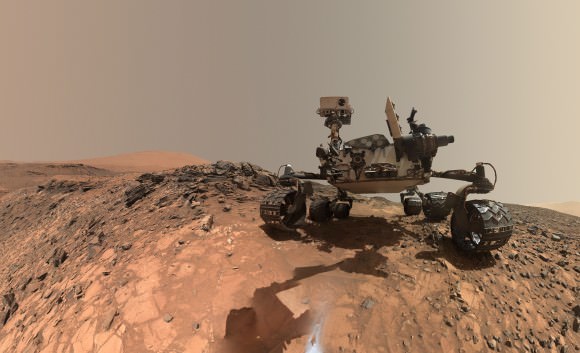
At the Planetary Science Vision 2050 Workshop, experts in Planetary Science and related disciplines gathered to present ideas about the next 50 years of exploration in the Solar System. A team led by Richard Quinn at the NASA Ames Research Center (ARC) presented their ideas on the search for extant life in the next few decades.
Their work is based on the decadal survey “Vision and Voyages for Planetary Science in the Decade 2013-2022.” That source confirms what most of us are already aware of: that our search for life should be focussed on Mars and the so-called “Ocean Worlds” of our Solar System like Enceladus and Europa. The question is, what will that search look like?
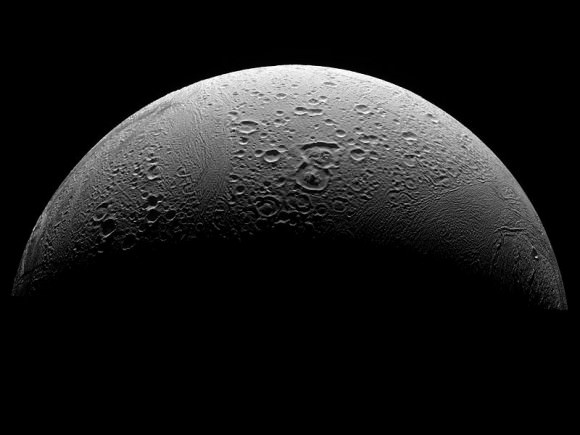
Quinn and his team outlined two technologies that we could center our search around.
Nanosatellites
A nanosatellite is classified as something with a mass between 1-10 kg. They offer several advantages over larger designs.
Firstly, their small mass keeps the cost of launching them very low. In many cases, nanosatellites can be piggy-backed onto the launch of a larger payload, just to use up any excess capacity. Nanosatellites can be made cheaply, and multiples of them can be designed and built the same. This would allow a fleet of nanosatellites to be sent to the same destination.
Most of the discussion around the search for life centers around large craft or landers that land in one location, and have limited mobility. The Mars rovers are doing great work, but they can only investigate very specific locations. In a way, this creates kind of a sampling error. It’s difficult to generalize about the conditions for life on other worlds when we’ve only sampled a small handful of locations.
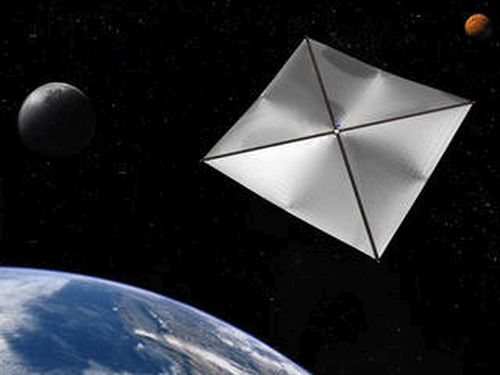
On Earth, life is everywhere. But Earth is also the home to extremophiles, organisms that exist only in extreme, hard-to-reach locations. Think of thermal vents on the ocean floor, or deep dark caves. If that is the kind of life that exists on the target worlds in our Solar System, then there’s a strong possibility that we’ll need to sample many locations before we find them. That is something that is beyond the capabilities of our rovers. Nanosatellites could be part of the solution. A fleet of them investigating a world like Enceladus or Europa could speed up our search for extant life.
NASA has designed and built nanosatellites to perform a variety of tasks, like performing biology experiments, and testing advanced propulsion and communications technologies. In 2010 they successfully deployed a nanosatellite from a larger, microsatellite. If you expand on that idea, you can see how a small fleet of nanosatellites could be deployed at another world, after arriving there on another larger craft.
Microfluidics
Microfluidics deals with systems that manipulate very small amounts of fluid, usually on the sub-millimeter scale. The idea is to build microchips which handle very small sample sizes, and test them in-situ. NASA has done work with microfluidics to try to develop ways of monitoring astronauts’ health on long space voyages, where there is no access to a lab. Microfluidic chips can be manufactured which have only one or two functions, and produce only one or two results.
In terms of the search for extant life in our Solar System, microfluidics is a natural fit with nanosatellites. Replace the medical diagnostic capabilities of a microfluidic chip with a biomarker diagnostic, and you have a tiny device that can be mounted on a tiny satellite. Since functioning microfluidic chips can be as small as microprocessors, multiples of them could be mounted.
” Technical constraints will inevitably limit robotic missions that search for evidence of life to a few selected experiments.” – Richard.C.Quinn, et. al.
When combined with nanosatellites, microfluidics offers the possibility of the same few tests for life being repeated over and over in multiple locations. This is obviously very attractive when it comes to the search for life. The team behind the idea stresses that their approach would involve the search for simple building blocks, the complex biomolecules involved in basic biochemistry, and also the structures that cellular life requires in order to exist. Performing these tests in multiple locations would be a boon in the search.
Some of the technologies for the microfluidic search for life have already been developed. The team points out that several of them have already had successful demonstrations in micro-gravity missions like the GeneSat, the PharmaSat, and the SporeSat.
“The combination of microfluidic systems with chemical and biochemical sensors and sensor arrays offer some of the most promising approaches for extant life detection using small-payload platforms.” – Richard.C.Quinn, et. al.
Putting It All Together
We’re a ways away from a mission to Europa or Enceladus. But this paper was about the future vision of the search for extant life. It’s never too soon to start thinking about that.
There are some obvious obstacles to using nanosatellites to search for life on Enceladus or Europa. Those worlds are frozen, and it’s the oceans under those thick ice caps that we need to investigate. Somehow, our tiny nanosatellites would need to get through that ice.
Also, the nanosatellites we have now are just that: satellites. They are designed to be in orbit around a body. How could they be transformed into tiny, ocean-going submersible explorers?
There’s no doubt that somebody, somewhere at NASA, is already thinking about that.
The over-arching vision of a fleet of small craft, each with the ability to repeat basic experiments searching for life in multiple locations, is a sound one. As for how it actually turns out, we’ll have to wait and see.
Here’s Your Chance to Scream in Space
The STRaND-1 Smartphone Nanosatellite. Credit: Surry Satellite Technology
The first “Alien” movie was promoted with the celebrated tagline, “In space, no one can hear you scream.” But a group of students want to find out if this is really true, and they’re asking the public for help. Students from the University of Cambridge in the UK will be loading human screams onto a smartphone that will be launched into space in December 2012 on a nanosatellite. The screams will be played at maximum volume while the smartphone is in low Earth orbit, and at the same time as the phone will record the playback to test if it’s possible to capture the sound of screaming in space. They want the best screams possible, and so are inviting the public to submit their screams via video. There will also be public voting on the screams to determine which screams will go to space.
You know you’ve always wanted to do this…..
“Obviously, we’re not expecting to get much back, there may be some buzzing, but this is more about getting young people interested in satellites and acoustics, perhaps encouraging them to consider future study in science or engineering” said Edward Cunningham, a physics undergraduate at Churchill College and one of the members of the Cambridge University Space Flight group (CUSF).
What is actually being tested is verifying the capabilities of a smartphone to control a satellite in space. UK space company Surrey Satellite Technology and their STRaND (Surrey Training Research and Nanosatellite Demonstration) team ran a Facebook competition to find apps to go into orbit – and CUSF’s screaming app was one of the winners. STRaND-1 project is touted as the “World’s first SmartPhone Nanosatellite.”
Here’s a video showing the satellite:
The phone will run on Android’s open-source operating system, and a computer, built at the Surrey Space Centre, will test the vital statistics of the phone once in space. When all the tests are complete, the plan is to switch off the micro-computer and the smartphone will be used to operate parts of the satellite. At its lowest, the phone will orbit 400km above the Earth, roughly the same as the International Space Station.
“Modern smartphones are pretty amazing,” said Shaun Kenyon, the project manager at Surrey Satellite Technology. “We want to see if the phone works up there, and if it does, we want to see if the phone can control a satellite.”
To submit your scream, create a YouTube video and send it in at www.screaminspace.com.
Each video must be at most ten seconds long, and there will be ten winning screams which can be voted for by the public on the project’s website. Screams must be entered before midnight (UTC) on Sunday November 4, 2012. The winning videos will be announced later and loaded onto the phone for launch, which is scheduled before the end of this year.
Other winners in the STRaND-1 project were iTesa, which will record the magnitude of the magnetic field around the phone during orbit, a STRAND Data app will show satellite telemetry on the smartphone’s display which can be imaged by an additional camera on-board, and Postcards from Space and 360, a joint effort with an app that will take images using the smartphone’s camera and use the technology onboard the spacecraft to establish STRaND-1’s position.
Source: University of Cambridge
, Surrey Satellite
NASA’s Nanosail-D Released into the Winds of Space
[/caption]
Despite being an idea rattling around inside the head of engineers and space enthusiasts for over 40 years, solar sails have never really gained much traction in the way of actual deployment. Today, NASA has taken an important step towards testing solar sail technology for use in future spacecraft.
The Nanosail-D spacecraft was launched Friday, Nov. 19 at 8:25 p.m. EST from Kodiak Island, Alaska, and was piggybacking on another satellite, both aboard a Minotaur IV rocket. It has successfully been ejected from the launch vehicle as of today, and is on its own. Though the sails have yet to deploy, this is already an achievement that bodes well for the future of both solar sail and small satellite technology.
The Nanosail-D satellite – commonly described as “loaf of bread” sized – was ejected from the Fast, Affordable, Science and Technology Satellite (FASTSAT) at 1:31 a.m. EST December 6th. Not only is this NASA’s first attempt at deploying a solar sail in space, but this also marks the first time a nanosatellite has been ejected from another satellite, proving that this is a reliable way to get multiple satellites into orbit at the same time.
Nanosail-D is a nanosatellite – or cubesat – designed to test the potential for solar sails in atmospheric braking. Such sails – made from a an ultra-thin and light material, in this case the polymer CP1 – could potentially be used to propel a spacecraft outside of our Solar System. The Nanosail-D sail will be deployed in low-Earth orbit, about 650 km (400 miles) up. The sail will be used to show how such technology could slow down satellites when they need to de-orbit.
Currently, de-orbiting satellites involves maneuvering them into a lower and lower orbit using the engines of the satellite, which necessitates more propellant aboard the spacecraft simply to dispose of it properly. Nanosail-D will deploy a solar sail and orbit for 70-120 days, eventually spiraling into the Earth’s atmosphere to burn up.
Since it will be orbiting so close to the Earth, its potential for testing solar sails as propulsion is not the focus of the mission; however, the deployment of a solar sail is itself a huge engineering challenge. Nanosail-D will be the perfect experiment to test out whether the method NASA will be using to unfurl the sail is workable in space.
Immediately after the ejection earlier today, a timer started a three-day countdown. Once it reaches zero, it will go boom – that is, four booms will spring out from the small satellite, and within five seconds the sail will be fully extended to its 100 square foot (10 square meter) sail-span.
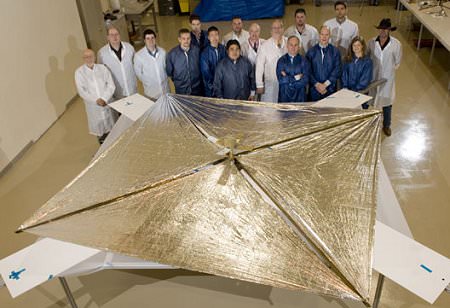
Dean Alhorn, NanoSail-D principal investigator and aerospace engineer at the Marshall Space Flight Center explains on the mission page, “The deployment works in the exact opposite way of carpenter’s measuring tape. With a measuring tape, you pull it out, which winds up a spring, and when you let it go it is quickly pulled back in. With NanoSail-D, we wind up the booms around the center spindle. Those wound-up booms act like the spring. Approximately seven days after launch, it deploys the sail off the center spindle.”
There have been other attempts at launching and deploying solar sails before, but once deployed, Nanosail D will be the longest-running solar sail experiment yet attempted. Both JAXA and the Russian space agency have deployed successful solar sail experiments.
JAXA launched a clover-shaped sail aboard a sounding rocket in 2004, and the experiment lasted about 400 seconds. They also launched the IKAROS spacecraft in May, 2010, which is currently en-route to Venus, and will fly to the opposite side of Sun from Earth. The Russians deployed a 20-meter diameter mirror successfully aboard the Progress M-15 resupply mission to Mir in 1993. Named Znamya 2, the mirror cast a 5km (3 mile)-wide bright spot on the ground that swept across southern France to western Russia, and orbited for several hours before burning up.
The Planetary Society is probably the most vocal and enthusiastic organization in support of solar sail technology. They are currently developing a solar sail similar to that of Nanosail-D, called Lightsail-1. The society attempted a launch of a solar sail called Cosmos 1 in 2005, but the rocket carrying the satellite did not fire during its second stage, and the craft was lost.
Nanosail-D is in its second iteration. The first spacecraft was commissioned in early 2008, and the team – astrophysicists and engineers at the Marshall Space Flight Center and the Ames Research Center – had four months to put together a workable satellite. It launched aboard a Falcon 1 rocket in August of 2008, but the rocket burned up in the atmosphere. If engineers are good at one thing, it’s redundancy – the team had constructed a second Nanosail-D, and had ample time to work out some of the bugs and develop the technology even more.
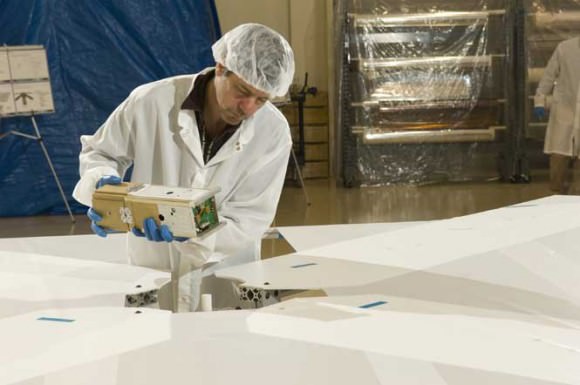
The Planetary Society almost had a chance to launch Nanosail-D, according to Louis Friedman, executive director of the The Planetary Society, they were contacted by the team developing Nanosail-D after the failed initial launch attempt, and asked if they would like to help launch the second Nanosail-D spacecraft. The Planetary Society agreed, but the team then found space aboard the FASTSAT launch. Consequently, Lightsail-D was borne out of this brief collaboration.
The timer is silently counting down what promises to be an exciting mission, and potential milestone in the future of spaceflight. Watch this space for further developments on the mission.
Sources: NASA press release, The Planetary Society, NASA Science, NASA Nanosail-D fact-sheet


